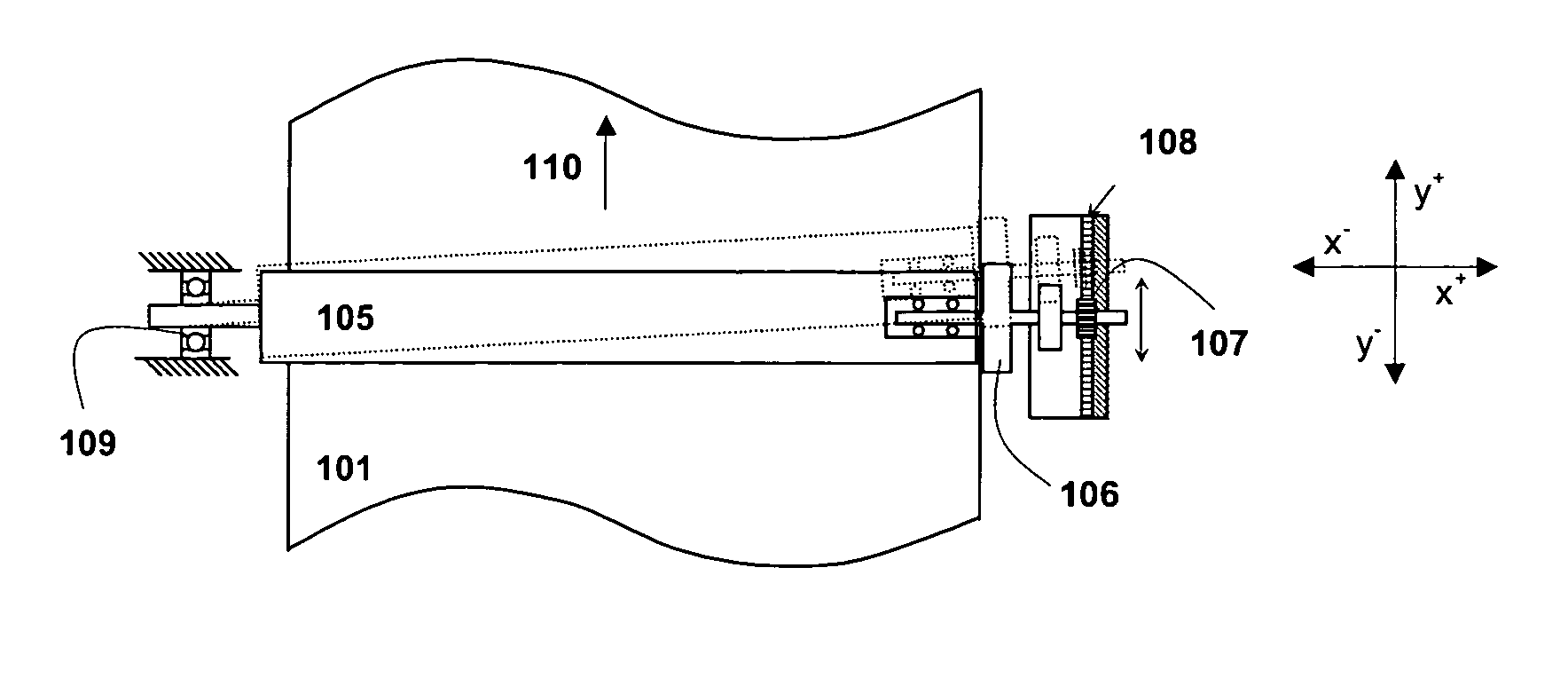Apparatus and method for steering a belt
a belt and accessory technology, applied in the field of accessory for steering a belt, can solve the problems of increasing the risk of belt damage during operation, reducing the lateral and requiring a running belt to operate the steering mechanism, so as to reduce the risk of belt buckling, the effect of sufficiently supporting and minimizing the distance between the rotatable element and the steering roller
- Summary
- Abstract
- Description
- Claims
- Application Information
AI Technical Summary
Benefits of technology
Problems solved by technology
Method used
Image
Examples
Embodiment Construction
[0041]The present invention will now be described with reference to the accompanying drawings, wherein the same reference numerals have been used to identify the same or similar elements throughout the several views.
FIG. 1
[0042]FIG. 1 diagrammatically indicates a printer in which one or more apparatus for steering a belt according to the present invention are present. The printer is provided with a unit for forming a toner image, the unit including an endless photoconductive belt 1. This belt is rotated in the indicated direction at a uniform speed using drive and guide rollers 2, 3 and 4. In the embodiment illustrated, the printer includes an analogue device in order to project onto the photoconductor 1, using flash lights 6 and 7, lens 8 and mirror 9, and an image of an original (not shown) placed on the easel 5. Prior to this imaging, the photoconductor is electrostatically charged by means of a corona unit 10. The optical imaging of the original on the charged photoconductor res...
PUM
 Login to View More
Login to View More Abstract
Description
Claims
Application Information
 Login to View More
Login to View More - R&D
- Intellectual Property
- Life Sciences
- Materials
- Tech Scout
- Unparalleled Data Quality
- Higher Quality Content
- 60% Fewer Hallucinations
Browse by: Latest US Patents, China's latest patents, Technical Efficacy Thesaurus, Application Domain, Technology Topic, Popular Technical Reports.
© 2025 PatSnap. All rights reserved.Legal|Privacy policy|Modern Slavery Act Transparency Statement|Sitemap|About US| Contact US: help@patsnap.com



